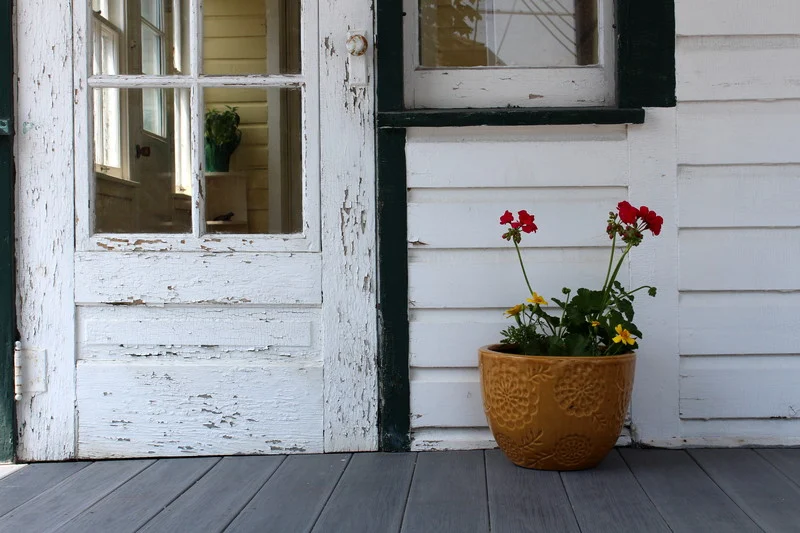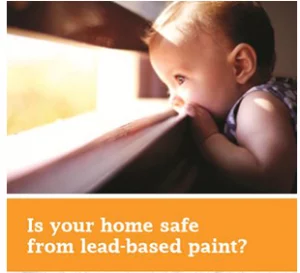New Lead-Based Paint Inspection Requirements

New lead-based paint inspection requirements, pursuant to P.L.2021, c.182, took effect July 22, 2022. The law imposes an obligation on municipalities to perform or hire a certified lead evaluation contractor to perform inspections of certain single-family, two-family, and multiple-rental dwellings for lead-based paint hazards every three years or upon tenant turnover where there is no valid lead-safe certification. Municipalities must permit dwelling owners/landlords to directly hire a certified lead evaluation contractor for this purpose.
What is Lead & Why is it Harmful?
 Lead is a toxic, naturally occurring element and heavy metal in our environment that was widely used in commercial products such as gasoline, paint, cosmetics, spices, and pottery. Children under the age of six and pregnant women are considered to be at the highest risk for exposure. Doors and windows with lead paint can release a fine lead dust when opened and closed, and young children can be exposed to lead in the normal course by putting hands in their mouths. Children can also be exposed by eating lead-based paint chips that peel off the wall or chewing on windowsills, door frames, or any other surfaces containing lead-based paint. Lead exposure in children can cause nervous system and kidney damage, as well as learning disabilities, attention-deficit disorder, and decreased intelligence. It can also cause behavior, speech, and language problems, hearing damage, decreased muscle and bone growth, and poor muscle coordination.
Lead is a toxic, naturally occurring element and heavy metal in our environment that was widely used in commercial products such as gasoline, paint, cosmetics, spices, and pottery. Children under the age of six and pregnant women are considered to be at the highest risk for exposure. Doors and windows with lead paint can release a fine lead dust when opened and closed, and young children can be exposed to lead in the normal course by putting hands in their mouths. Children can also be exposed by eating lead-based paint chips that peel off the wall or chewing on windowsills, door frames, or any other surfaces containing lead-based paint. Lead exposure in children can cause nervous system and kidney damage, as well as learning disabilities, attention-deficit disorder, and decreased intelligence. It can also cause behavior, speech, and language problems, hearing damage, decreased muscle and bone growth, and poor muscle coordination.
Resource: Learn more about Lead-based Paint | Protect your Family from Sources of Lead | CDC Lead Prevention
What Dwellings are Required to be Inspected?
All single-family, two-family, and multiple rental dwellings must be inspected according to the new lead-based paint inspection requirements.
The following dwellings are exempt:
- Dwellings that were constructed during or after 1978.
- Single-family and two-family seasonal rental dwellings which are rented for less than six-months duration each year by tenants that do not have consecutive lease renewals.
- Dwellings that have been certified to be free of lead-based paint pursuant to N.J.A.C. 5:17-3.16(b).
Identifying Lead-based Paint Hazards
Lead-based paint is usually not a hazard if it is in good condition, and the paint is not on an impact or friction surface, such as a window or door. Deteriorating lead-based paint (peeling, chipping, chalking, cracking, or damaged paint) is a hazard and needs attention. Lead dust can form when lead-based paint is scraped, sanded, or heated. Dust also forms when painted surfaces bump or rub together. Lead chips and dust can reside on surfaces and objects that people touch. Certified lead evaluation contractors are trained in the use of a combination of available methods to confirm the presence of lead-based hazards.
Property Owner Responsibilities Under P.L. 2021, c. 182
If lead-based paint hazards are identified, then the owner of the dwelling shall remediate the hazards through abatement or lead-based paint hazard control mechanisms. Property owners must also report all tenant turnover activity to the municipality. Lastly, property owners must provide a copy of N.J.A.C. 5:28A, any lead-safe certifications, and the accompanying guidance document, Lead-Based Paint in Rental Dwellings, to any prospective owners of the dwelling during the real estate transaction, settlement, or closing.
Can Hillmann Help?
Yes! Hillmann is a certified lead evaluation contractor. Our Environmental Health & Safety services division has extensive experience in conducting lead assessments in a variety of settings, including commercial and residential. Whether you need help figuring out the new law and how it applies to you or you’re ready to partner with our team for a lead evaluation, we’re here. Contact us at (908) 688-7800 or info@hillmannconsulting.com.
-

Healthy Indoor Air Quality in Commercial Buildings
May 27, 2024
-

Hillmann Announces New Partners
March 7, 2024
-

Hillmann Acquires Abraxas Energy Consulting
February 1, 2024
-

Local Law 97: Benefits Beyond Compliance
January 29, 2024
-

Asbestos Regulations Guidance
December 4, 2023



